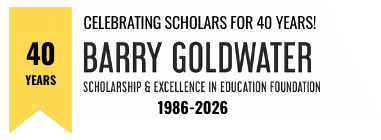“Applying for the Goldwater Scholarship was an opportunity to articulate my research and motivations; receiving the Goldwater Scholarship set the foundation to continue those scientific pursuits.”
I have always been driven by confusion, continually seeking to understand complicated systems, and excited by the prospect of the “Ah ha!” moment. One of the most satisfying feelings is when the last piece of a puzzle falls into place, and you suddenly comprehend a seemingly intractable problem. In high school, I was fortunate to have excellent educators support this ambition. Those teachers not only impacted me in the classroom but encouraged me to eschew the school’s curriculum for advanced math and science at a community college, and ultimately guided me away from working in trades, to seeking out research at the University at Buffalo.
Armed with the naivety of an 18 year old, I cold-emailed every professor I could find who was working on nanoscience — an exciting subject that seemed at the intersection of my varied interests – asking to do research in their labs. One professor, Dr. Mark Swihart, answered that email, and I started researching silicon nanoparticles just five days into my freshman year. Four years of trying to comprehend quantum effects and atomic structure continually satisfied my curiosity. Through the support of my mentors at UB, I also became engaged in multiple educational outreach programs, attempting to afford students the same opportunities my teachers had given me.
When an advisor at UB suggested that I apply for the Goldwater Scholarship, I was a little apprehensive and felt out of my depth considering a national scholarship that I had only just heard of. In fact, I didn’t receive the scholarship the first time I applied, albeit managed to succeed the following year. Coming from a difficult financial background, I was accustomed to working multiple construction jobs alongside of attending school; however, scholarships including the Goldwater Scholarship enabled me to focus more completely on my academic pursuits, and less on how I could afford them. Moreover, the Goldwater had a substantial impact on my career. The process of applying, combined with the national recognition, aided my confidence in reaching higher and I ultimately obtained a Marshall Scholarship to pursue a DPhil at the University of Oxford.
Moving to the UK allowed me to find new scientific adventures while also continuing to train as a rugby player following my time playing Division I rugby for Buffalo. At Oxford, my research took a more computational bend, building models to characterize the atomic structure of disordered materials. Working with Prof. Andrew Goodwin, I developed a healthy disregard for disciplinary boundaries, tackling challenges of disorder spanning physics, chemistry, and biology. I continued applying computational methods to the physical sciences at the University of Liverpool, where I built the brain on the world’s first mobile robotic chemist. As published in Nature, the robot conducted photocatalysis experiments and autonomously decided which experiment to do next in order to optimize hydrogen production. Since then, I have remained focused on autonomous robotic discovery in the physical sciences. I presently develop artificial intelligence and automation for materials discovery at Brookhaven National Laboratory, and in my spare time I apply machine learning for antibody engineering at a startup, BigHat Biosciences. The Goldwater scholarship opened doors and laid the foundation for my research endeavors since. I am grateful to have had this support, and excited to see where my quest for confusion takes me next.
Photocredit: University of Buffalo

